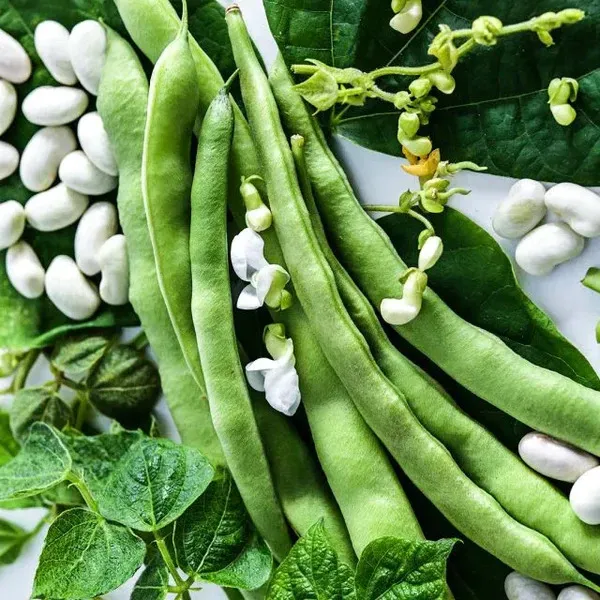Finger Lime: The Exotic Citrus Delight for Your Home Garden
About Finger Lime
Finger Lime (Citrus australasica) is an exotic citrus variety native to Australia, often called “citrus caviar” due to its tiny, bead-like juice vesicles that burst with a tangy, refreshing flavor. This unique citrus fruit has gained popularity among chefs and home gardeners for its culinary versatility, ornamental beauty, and resilience in various climates.
Finger Lime trees are small, bushy, and thorny, making them ideal for hedging, container gardening, or orchard cultivation. Their ability to thrive in challenging environments, drought conditions, and poor soil makes them an excellent choice for both beginner and experienced gardeners.

Why Grow Finger Lime?
Unique and Rare Fruit — Produces small, elongated fruits with citrus caviar-like pulp.
Drought-Tolerant & Hardy — Once established, the plant requires minimal water.
Great for Small Spaces — Suitable for containers, patios, or urban gardens.
Culinary Uses — Ideal for cocktails, seafood, desserts, and gourmet dishes.
Long Harvest Season — Produces fruit from late summer to early winter.

When to Plant Finger Lime Seeds
- Best Time: Spring through early summer when temperatures are consistently warm.
- Temperature Needs: Germination occurs best between 70–85°F (21–29°C).
- Growing Zones:
- Ideal for USDA zones 9–11 (warm, frost-free areas).
- In colder climates, grow in containers and move indoors during winter.
Where to Plant Finger Lime
- Sunlight: Needs 6–8 hours of full sun daily.
- Soil Type: Prefers well-draining, slightly acidic soil (pH 5.5–6.5). A mix of sandy loam and compost works best.
- Spacing: If planting in an orchard or garden, space trees at least 8–12 feet apart.
- Container Growing: Use a large container (12–18 inches wide, 15+ inches deep) with proper drainage.
How to Plant Finger Lime Seeds
Step 1: Seed Preparation
- Soak seeds in warm water for 24 hours to soften the outer shell.
- Select a well-draining seed-starting mix or a combination of peat, perlite, and sand.
Step 2: Sowing the Seeds
- Fill seed trays or pots with moist soil.
- Plant the seeds ¼ inch deep and cover lightly with soil.
- Mist the soil with water and keep it consistently moist but not soggy.
- Place in a warm location (70–85°F) with indirect sunlight.
Step 3: Germination & Early Growth
- Germination takes 2–6 weeks.
- Once seedlings develop 2–3 sets of true leaves, transplant them into larger pots or garden soil.
How to Care for Finger Lime Trees
Watering
- Water regularly until established, then reduce frequency.
- Allow the topsoil to dry slightly between watering sessions to prevent root rot.
Fertilizing
- Apply a balanced citrus fertilizer once a month during the growing season (spring-summer).
- Use organic compost or well-rotted manure for slow-release nutrients.
Pruning & Maintenance
- Remove dead or weak branches to maintain shape and improve airflow.
- Avoid heavy pruning, as flowers and fruits grow on new wood.
Pest & Disease Control
- Watch out for aphids, spider mites, and scale insects.
- Treat infestations with neem oil or insecticidal soap.
- Ensure good air circulation to prevent fungal infections.
Winter Care
- In cold climates, move potted finger lime plants indoors before temperatures drop below 40°F (4°C).
- Protect outdoor plants with mulch around the base and frost covers.
Companion Plants for Finger Lime
Planting companion plants around Finger Lime helps improve soil, repel pests, and boost growth. Some excellent companion plants include:
Basil And Marigold — Acts as natural pest repellents.
Lavender And Rosemary — Attracts pollinators and enhances citrus health.
Legumes (Beans, Peas) — Fixes nitrogen in the soil, improving citrus growth.
Aloe Vera — Natural insect deterrents.
Strawberries And Blueberries — Thrive in similar acidic soil conditions.
Avoid planting near large shade trees, as Finger Lime requires full sunlight for optimal growth.
Culinary Uses of Finger Lime
Finger Lime is prized for its citrus caviar-like texture, making it a highly sought-after ingredient in gourmet cuisine. It can be used in:
- Cocktails and beverages as a garnish.
- Seafood dishes such as oysters, sushi, and grilled fish.
- Desserts, yogurts, and ice creams for a burst of citrus flavor.
- Salads and dressings for an extra zesty touch.
- Asian and fusion cuisine, including stir-fries and sauces.
Final Thoughts
Growing Finger Lime from seeds is a rewarding experience for any gardener. With its exotic appearance, flavorful pulp, and hardy nature, this citrus variety is perfect for those looking to add a unique fruit to their home garden.
For high-quality Finger Lime seeds, visit Organic India Seeds and start your citrus-growing journey today.



Hinterlasse einen Kommentar
Diese Website ist durch hCaptcha geschützt und es gelten die allgemeinen Geschäftsbedingungen und Datenschutzbestimmungen von hCaptcha.